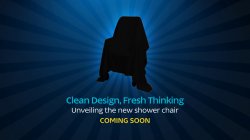Why are Light Reflectance Values important?
The Equality Act 2010 requires that all new and refurbished public buildings and workplaces comply with current regulations, ensuring safe entry, exit and safe passage throughout the building. The regulations mean that people, regardless of disability, age or gender, must be able to gain equal access to public buildings.
For visually impaired people this means amongst other things that there must be a good visual contrast between various elements of the building, including doorways, fixtures and fittings. Therefore the contrast between, for example, floors and walls must achieve a certain level – measured by something called Light Reflectance Value (LRV).
What is LRV?
Visual contrast is measured by LRV, which is the acronym for 'light reflectance value'. The LRV of an object is a measure of the quantity of visible light at all wavelengths that is reflected from the surface when illuminated by a light.
Currently, the recommended difference in LRV values of two surfaces should be greater than 30 points. Where rooms provide adequate illumination measured to greater than 200 lux an LRV value no less than 20 would be acceptable. If further information or clarification is sought please refer to Document M - Part 2 and BS 8300 7.2.5


Certain fixtures need to contrast visually with the surface to which they are fixed so that they are easier to identify to those with partial sight. Even the floor and the walls need to contrast so that the user can more easily see where the boundaries of the room are.
To qualify, the two colours have to differ by more than 30 points. Where the surfaces are lit by more than 200 lux, the two colours must differ by a minimum of 20 points. And (to make things extra complex) “where door opening furniture projects beyond the face of the door or otherwise creates enhanced differentiation and shade, a minimum difference in light reflectance value of 15 points is considered adequate”, according to Doc M, Volume 2.

Latest Blog Posts
Seasonal opening times 2025/26
2025 Holiday Season Update - Our team are here for you but we will be taking a break between the 24th December and 2nd January 2025.

New Shower Chair Innovation
Experience Wealden Rehab’s new shower chair innovation at the OT Show 2025

Responsive Care Equipment Supplier Across the UK
Supporting hospitals and care providers in unsettling times ...

NAEP Conference 2025
Meeting Occupational Therapists, Commissioners and Exploring Bariatric and Paediatric Solutions

Our Seasonal opening times 2024/25
Our team are here for you but we will be taking a break between the 24th December and 2nd January 2025.

Can a RAZ shower chair rust?
Get an in-depth look at the RAZ shower chair range and the protective features that make them built to last





